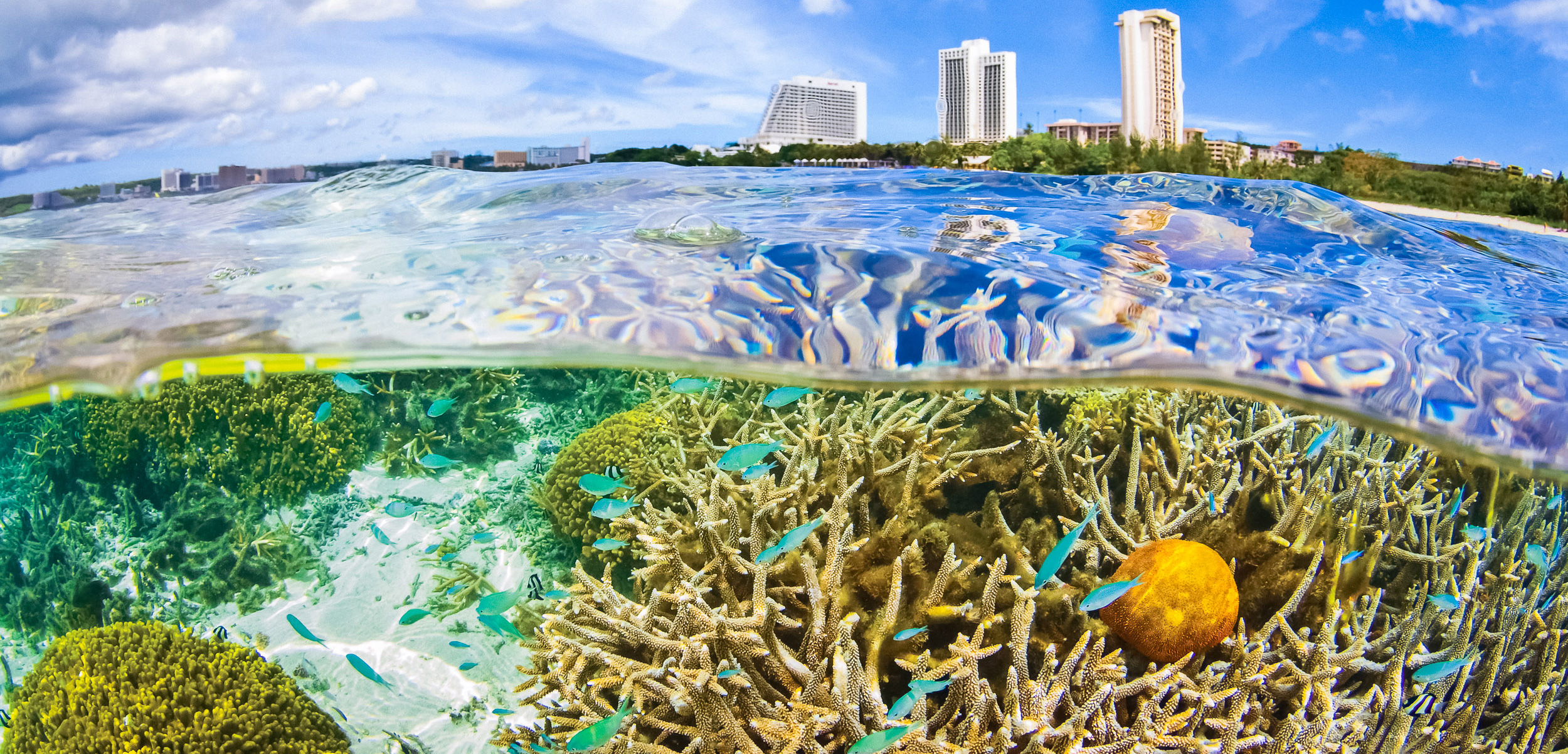Corals Keep a Record of Ocean Pollution
Changes in nitrogen runoff are reflected in coral reef growth.
Article body copy
Coral reefs are expert record keepers. Corals build their calcium homes in layers that accumulate over decades or even millennia, and differences between these layers can reveal a lot about a reef’s history. Much like analyzing tree rings, these layers can tell stories about the corals’ health, and how environmental conditions changed over time.
By tapping into a coral reef’s storytelling ability, a team of researchers has unlocked a 56-year record of sewage discharge off Guam, an American territory in the northwest Pacific. The record reflects changing patterns of discharge as the island’s population grew, and echoes periods when the local waste treatment plant was inoperative.
Aside from the Guam-specific record, the study shows coral is a sensitive record keeper of changes in sewage runoff, and could even be used to study historical pollution levels.
While ocean warming and acidification have damaged coral reefs worldwide, agriculture, raising livestock, and deforestation have harmed reefs too. The main result of these three industries is an excess of nitrogen runoff into water, which triggers algal blooms and red tides.
But quantifying nitrogen flow from specific sources has been a challenge, says Kiho Kim, an environmental scientist at American University in Washington, DC. Kim and his team previously studied nitrogen flow and Caribbean coral reefs, but got only some of the answers they wanted. The region is a very complicated system with nitrogen entering the ocean from a variety of sources, making it hard to pinpoint which sources are causing changes in nitrogen levels, he says.
In its latest research, the team turned to the Togcha reef flat off Guam. The site was selected because it’s less complex: there is little agricultural activity, and knowing the source of the nitrogen pollution is easy—most of it comes from sewage discharge. There is a wastewater treatment plant there that was periodically inoperative, sometimes for months or years at a time.
Using a specialized hollow drill, the researchers collected a 70-centimeter-long core of the Togcha reef coral. They X-rayed the core, which exposed light and dark bands, corresponding to summer and winter growth. The core sample had 56 growth bands, representing the years 1958 to 2014. The scientists used isotope analysis to study the properties of nitrogen present in each band—concentrations of heavier forms of nitrogen show greater levels of untreated sewage polluting the water, while lighter forms show the water was less polluted.
By comparing the scientific measurements with historical records, the scientists found a strong correlation between sewage discharge rates and population increases as reflected in the type of nitrogen present in the coral. Notable was that nitrogen levels in the coral reflected, through time, whether the sewage treatment plant near the Togcha reef was in operation or not.
Coral nitrogen analysis offers an independent measure of the effects of human activity on the ecosystem. It “can tell you where the problems are, how bad the problems are, and where efforts should be targeted to minimize the impact of pollution,” Kim says.
The approach can be used in other reefs to uncover the story of how human population growth and activities have affected ocean pollution and coral health.

